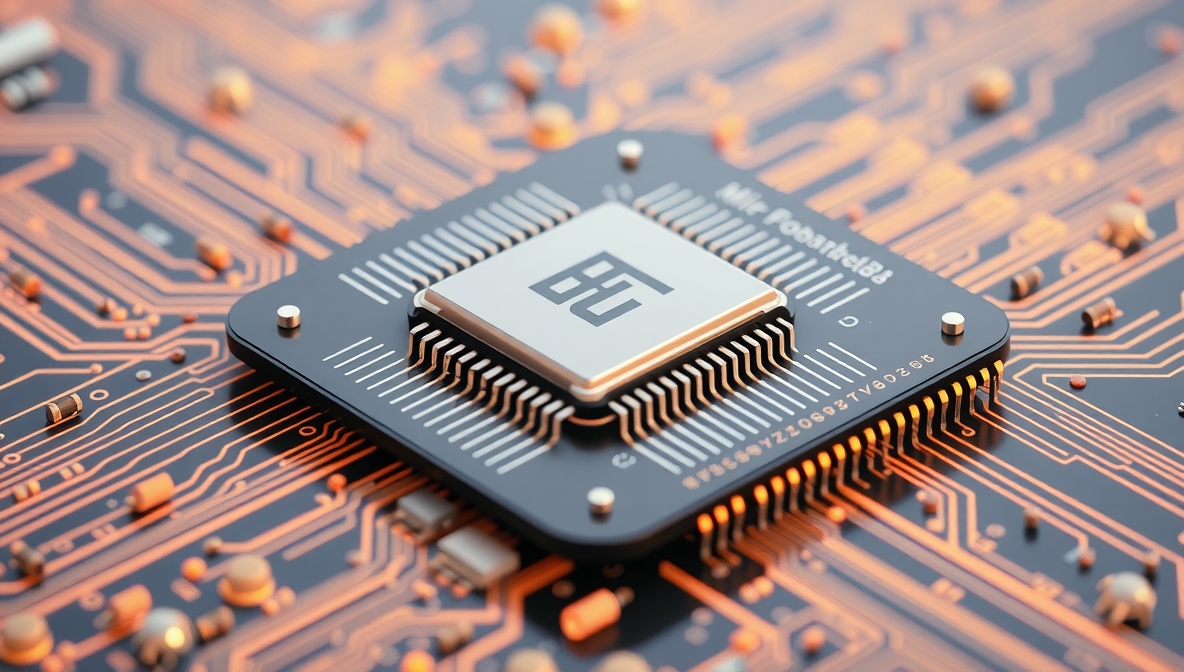Введение
В мире, где технологии встроены в каждый аспект нашей жизни, существует один электронный компонент, который служит бьющимся сердцем большинства умных устройств вокруг нас: микроконтроллер. Этот маленький компонент, часто не больше ногтя, объединяет процессорный блок, память и возможности ввода/вывода на одном чипе, позволяя разнообразным устройствам – от простых игрушек до сложных промышленных систем – работать автономно и интеллектуально.
What is a Microcontroller?
Микроконтроллер — это крошечный компьютер, который объединяет все основные компоненты компьютера (процессор, память, интерфейсы ввода/вывода) на одном чипе. В отличие от стандартных процессоров, используемых в персональных компьютерах, микроконтроллеры предназначены для выполнения конкретных задач во встраиваемых системах, то есть системах, интегрированных в другие продукты.
A typical microcontroller includes the following components:
- Central Processing Unit (CPU): The brain of the microcontroller, which executes instructions and calculations.
- Program Memory (Flash Memory): Stores the software code that the microcontroller runs.
- Data Memory (RAM): Used for temporary storage of data during runtime.
- EEPROM: Non-volatile memory for permanent storage of data even when the device is powered off.
- Digital and Analog Ports: Allow communication with the external world.
- Timers: Enable time measurement and execution of precisely timed operations.
- Communication Interfaces: Such as UART, SPI, I2C, and others that enable communication with other components.
A Brief History of Microcontrollers
Первый микроконтроллер появился в 1971 году, когда Intel разработала 4004, первый однокристальный процессор. Однако первым современным микроконтроллером был TMS1000, разработанный Texas Instruments в 1971 году, за которым последовал Intel 8048 в 1976 году.
Since then, the field has developed rapidly:
- In the 1980s, microcontrollers like Intel’s 8051 became an industry standard that is still used in modern versions.
- In the 1990s, microcontroller families like Microchip’s PIC and Atmel’s AVR (now owned by Microchip) offered improved performance at lower prices.
- In the 2000s, ARM-based microcontrollers began to spread, offering high performance with low power consumption.
- In the last decade, platforms like Arduino have made the use of microcontrollers accessible to beginners and hobbyists.
Popular Microcontroller Families
AVR
Семейство AVR, изначально разработанное компанией Atmel, является одним из самых популярных семейств среди любителей и разработчиков. Оно служит основой для популярной платформы Arduino.
PIC
Микроконтроллеры PIC, производимые компанией Microchip, являются одними из самых распространенных в отрасли, с широким разнообразием моделей, подходящих для различных применений.
ARM Cortex-M
Микроконтроллеры на базе ARM Cortex-M стали очень популярными в последние годы благодаря их высокой производительности и низкому энергопотреблению. Они используются в широком спектре продуктов, от медицинских устройств до устройств IoT.
ESP8266/ESP32
Эти микроконтроллеры от Espressif стали особенно популярными в области IoT благодаря встроенным возможностям WiFi и Bluetooth по низкой цене.
Common Uses
Microcontrollers are found in almost every modern electronic device:
- Home Appliances: Microwaves, washing machines, smart refrigerators
- Потребительская электроника: Remote controls, toys, digital cameras
- Transportation: Engine control systems, ABS, safety systems
- Общение: Mobile phones, routers, modems
- Medicine: Medical equipment, monitoring devices, insulin pumps
- Industry: Robots, machine control, industrial automation
- IoT (Internet of Things): Smart sensors, smart home devices, environmental monitoring systems
Advantages of Microcontrollers
Microcontrollers offer several significant advantages:
- Low Cost: Basic microcontrollers cost less than one dollar in mass production.
- Small Size: Compact design allows integration into small products.
- Low Power Consumption: Some models can operate for years on a small battery.
- Reliability: The relatively simple architecture leads to fewer malfunctions.
- Flexibility: They can be programmed to perform a wide range of tasks.
- Ease of Development: Modern development tools enable relatively easy programming.
Проблемы и ограничения
Despite their advantages, microcontrollers also present challenges:
- Limited Performance: Compared to personal computer processors, speed and power are limited.
- Limited Memory: The size of programs and data is constrained by available memory.
- Programming Complexity: Low-level programming requires a deep understanding of hardware.
- Challenging Debugging: Finding bugs in embedded systems can be complicated.
- Security: Many microcontrollers are not designed for high security, which poses a challenge in the IoT era.
Programming Microcontrollers
Programming microcontrollers is typically done in one of the following languages:
- C/C++: The most common languages for microcontroller programming, offering a good balance between ease of use and performance.
- Assembly: Allows precise control and maximum efficiency, but is more complex to write and maintain.
- MicroPython/CircuitPython: Lightweight versions of Python that allow easier programming at the expense of performance.
- Arduino IDE: A simple development environment based on C++ with libraries that make usage easier.
The Future of Microcontrollers
With the development of the Internet of Things (IoT) and smart devices, microcontrollers continue to evolve in several directions:
- Advanced Capabilities: New models incorporate graphics processing, machine learning, and AI capabilities.
- Меньше потребление энергии: Modern microcontrollers can operate with minimal energy consumption, enabling applications powered by environmental energy (Energy Harvesting).
- Improved Security: Manufacturers are implementing more security mechanisms in response to growing cyber threats.
- Integration: Microcontrollers incorporate more auxiliary components such as wireless communication interfaces and advanced analog circuits.
- Transition to Advanced Manufacturing Processes: Using advanced manufacturing technologies allows the creation of smaller and more efficient microcontrollers.
Заключение
Микроконтроллер является одним из самых важных и распространенных электронных компонентов в нашем мире. Несмотря на свой небольшой размер, его влияние на современную жизнь огромно. По мере развития технологий ожидается, что микроконтроллеры продолжат играть центральную роль в технологических инновациях, обеспечивая следующую революцию умных и подключенных устройств.
Понимание принципов работы микроконтроллеров необходимо не только для инженеров-электронщиков, но и для разработчиков, дизайнеров продуктов и всех, кто заинтересован в понимании и участии в формировании нашего технологического будущего.














